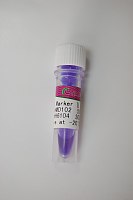Multicolor Laser Scanning Confocal Immunofluorescence Microscopy of DNA Damage Response Biomarkers
互联网
458
DNA damage through endogenous and environmental toxicants is a constant threat to both a human’s ability to pass on intact genetic information to its offspring as well as somatic cells for their own survival. To counter these threats posed by DNA damage, cells have evolved a series of highly choreographed mechanisms—collectively defined as the DNA damage response (DDR)—to sense DNA lesions, signal their presence, and mediate their repair. Thus, regular DDR signalling cascades are vital to prevent the initiation and progression of many human diseases including cancer. Consequently, quantitative assessment of DNA damage and response became an important biomarker for assessment of human health and disease risk in biomonitoring studies. However, most quantitative DNA damage biomarker techniques require dissolution of the nuclear architecture and hence loss of spatial information. Laser scanning confocal immunofluorescence microscopy (LSCIM) of three-dimensionally preserved nuclei can be quantitative and maintain the spatial information. Here we describe the experimental protocols to quantify individual key events of the DDR cascade in three-dimensionally preserved nuclei by LSCIM with high resolution, using the simultaneous detection of Rad50 as well as phosphorylated H2AX and ATM and in somatic and germ cells as an example.









